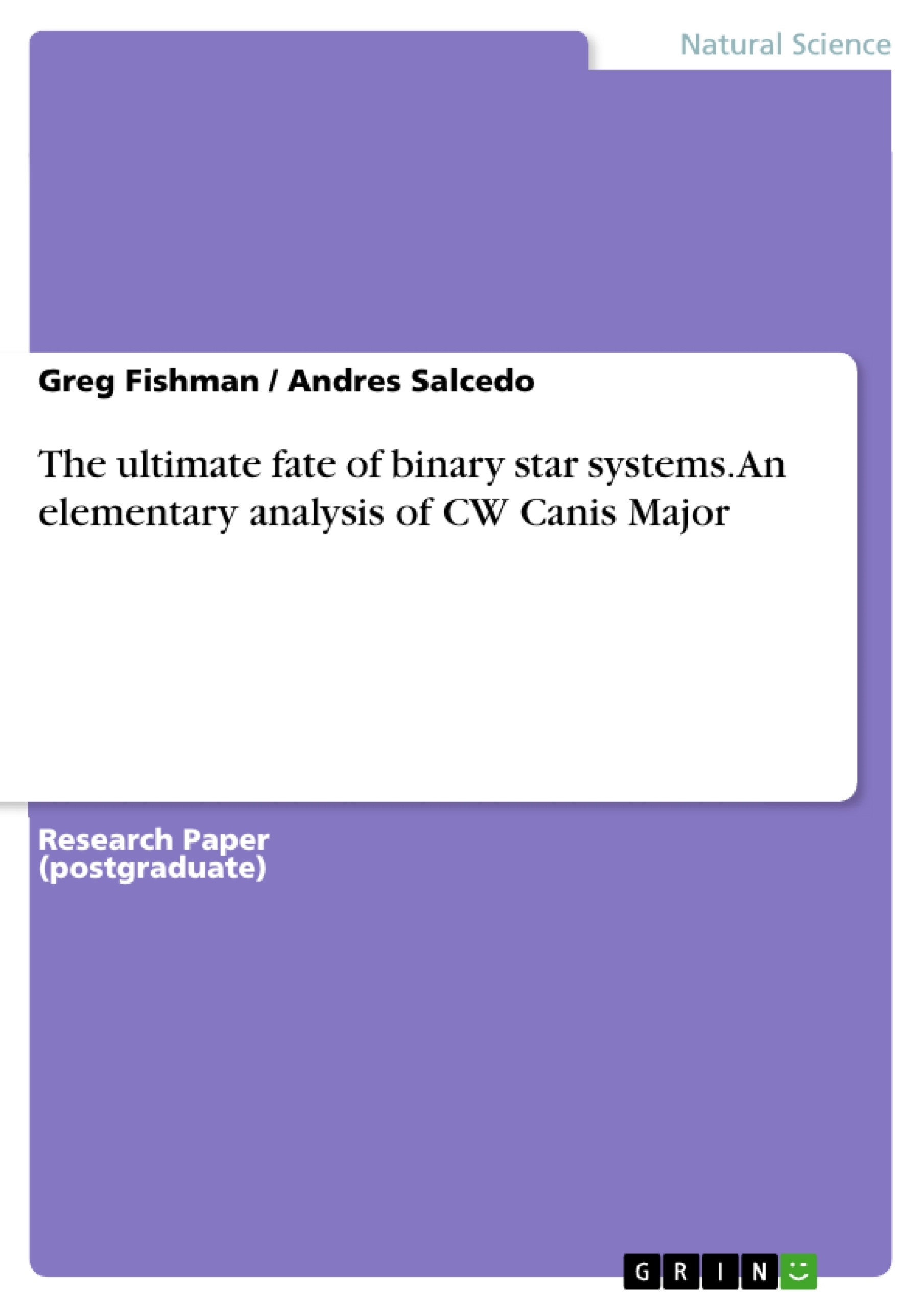The paper discusses various stellar parameters and the ultimate fate of the binary star system CW Canis Major. Using observational data of the radial velocities and apparent visual magnitudes the individual masses and radii have been determined. These values have allowed us to estimate the spectral classification of the stars.
Inhaltsverzeichnis (Table of Contents)
- I. INTRODUCTION
- II. ANALYSIS OF LIGHT CURVE AND RADIAL VELOCITY MEASUREMENTS
Zielsetzung und Themenschwerpunkte (Objectives and Key Themes)
This paper aims to analyze the stellar parameters and determine the ultimate fate of the binary star system CW Canis Majoris. It utilizes observational data of radial velocities and apparent visual magnitudes to determine the individual masses and radii of the stars, enabling the estimation of their spectral classification.
- Binary star systems and their historical significance in astronomy
- Methods for measuring stellar masses through observations of binary systems
- Analysis of light curve and radial velocity measurements for CW Canis Majoris
- Calculation of stellar parameters and their implications for understanding the system's evolution
- Comparison of calculated values with those obtained using more sophisticated methods
Zusammenfassung der Kapitel (Chapter Summaries)
I. INTRODUCTION
This chapter provides an overview of the historical context of binary star systems, highlighting their importance in understanding the universality of Newton's law of gravitation. It introduces CW Canis Majoris, an eclipsing binary system that will be the focus of the study. The chapter discusses the methods and data sources used for analyzing the system, including light curve data from the All Sky Automated Survey (ASAS) and radial velocity data from the McDonald Observatory.
II. ANALYSIS OF LIGHT CURVE AND RADIAL VELOCITY MEASUREMENTS
This chapter delves into the analysis of the light curve and radial velocity data for CW Canis Majoris. It utilizes basic assumptions, such as a total primary eclipse and an inclination angle of 90°, to calculate the visual magnitudes and radial velocities of both stars. By analyzing these data, the chapter derives the mass ratio of the system and estimates the semi-major axes of the individual stars.
Schlüsselwörter (Keywords)
Binary star systems, CW Canis Majoris, eclipsing binaries, stellar parameters, light curve analysis, radial velocity measurements, mass determination, spectral classification, stellar evolution.
- Quote paper
- Greg Fishman (Author), Andres Salcedo (Author), 2012, The ultimate fate of binary star systems. An elementary analysis of CW Canis Major, Munich, GRIN Verlag, https://www.grin.com/document/211741



